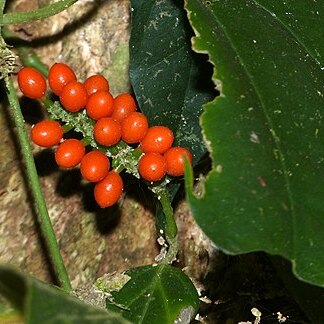A slender climbing plant. Both the twigs and leaf stalks have scattered hairs. The leaf blade is oval and 14 cm long by 7 cm wide. Male and female flowers are separate. The female flowering organ is as long as the leaves. The male flowering shoots are longer. The fruiting body is longer than the leaves. The fruit is a berry and is round. They are 4 mm long by 3 mm wide and red.

